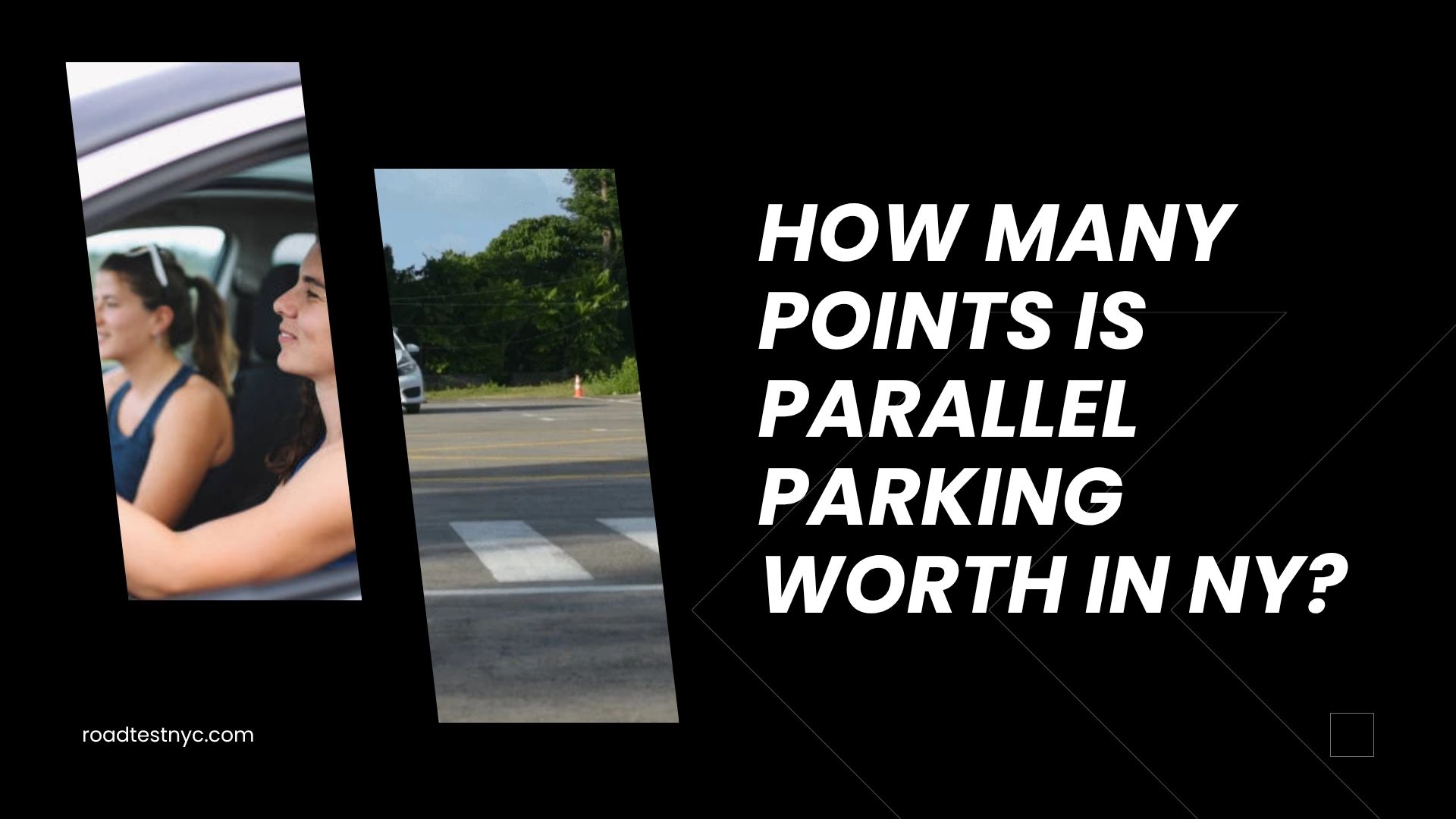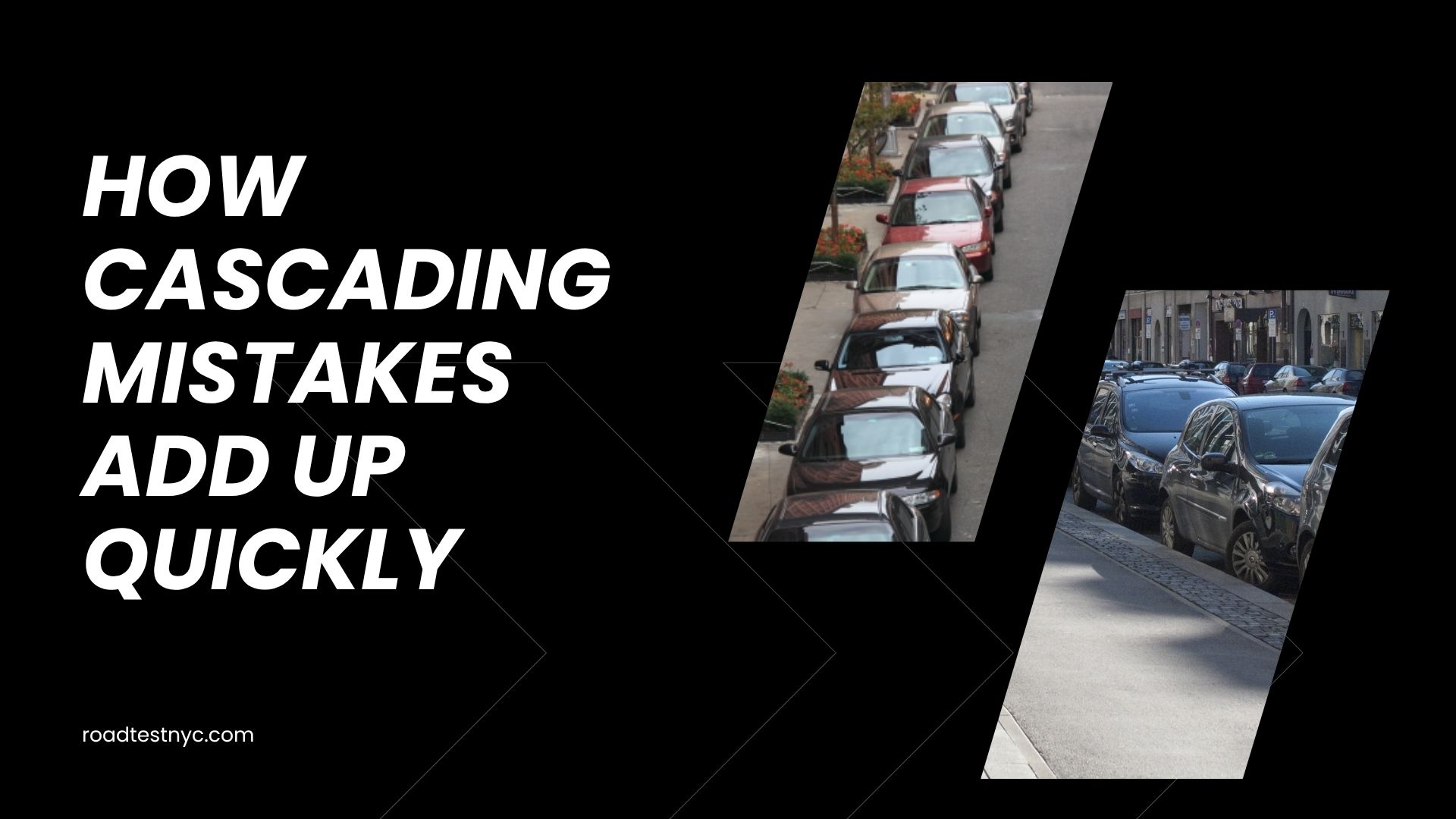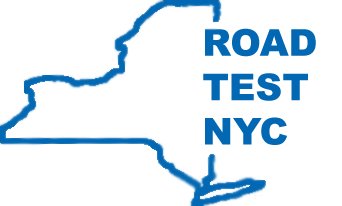If you're preparing for your New York road test, understanding the scoring system can make the difference between passing and failing. The answer is straightforward: you need to score 30 points or less to pass your road test. Accumulate more than 30 points, and you'll need to schedule another attempt.
This guide breaks down everything you need to know about the NYS road test scoring sheet, from how many points each mistake costs to what causes an automatic failure. Whether you're wondering about parallel parking points or trying to figure out how many mistakes you can afford to make, we've got you covered.
Understanding the NY Road Test Scoring System
The New York DMV uses a standardized evaluation sheet during every road test. Your examiner marks down every mistake you make, assigning point values based on how serious the error is. Think of it like a golf score – lower is better, and you're trying to stay under par.
Each mistake falls into one of three categories: minor infractions worth 5 points, moderate errors worth 10 points, or serious violations worth 15 points. The scoring sheet lists 31 specific items your examiner watches for, organized into five main sections covering everything from leaving the curb to vehicle control.
Here's the critical number to remember: 30 points is the maximum you can accumulate and still pass. Score exactly 30 points? You pass. Score 31 or more? You fail. Before you even schedule your road test, make sure you understand these benchmarks.

How Many Points Does It Take to Fail a Road Test in NY?
Let me be crystal clear about this: you fail the New York road test if you accumulate MORE than 30 points. This isn't like a written test where you need a certain percentage correct. Instead, you're trying to keep your deductions as low as possible.
The tricky part? Points add up fast. One significant mistake can lead to several others, creating a domino effect. For example, making a wide right turn might earn you 5 points, but if that lands you in the wrong lane (10 more points), and you fail to check your blind spot when correcting (another infraction), and you don't signal the lane change – suddenly you've racked up more than 30 points from a single initial error.
Quick Answer: You fail if you accumulate MORE than 30 points. Scoring exactly 30 points means you PASS.
The Complete NY Road Test Scoring Sheet Breakdown
The official NYS road test evaluation sheet divides driving skills into five distinct sections. Understanding what the driving examiner will look for helps you prepare for each category.
Section A: Leaving Curb
|
Test Item |
Points Deducted |
How to Avoid This Mistake |
|
Fails to observe |
10 |
Check rearview and side mirrors before pulling away. Adjust them properly before the test starts. |
|
Fails to signal |
5 |
Use your turn signal even if no other vehicles are visible. The examiner is watching for proper habits. |
|
Uses mirror only/Fails to check blind spot |
5 |
Physical shoulder checks are mandatory. Mirrors alone aren't enough – turn your head and look. |
Section B: Turning and Intersections
|
Test Item |
Points Deducted |
How to Avoid This Mistake |
|
Poor judgment approaching or at intersections |
10 |
Slow down well before the intersection. Check for pedestrians, cyclists, and oncoming traffic. |
|
Fails to stop near center when waiting to make left turn |
10 |
Pull into the intersection center with wheels straight. This prevents you from being pushed into oncoming traffic if rear-ended. |
|
Turns wide – short right |
5 |
Stay close to the right curb throughout the turn. Begin and end in the rightmost lane. |
|
Turns wide – short left |
5 |
Signal early, check both directions, and turn directly into the proper lane without drifting. |
|
Inattentive to traffic signs, signals, or lane markings |
10 |
Constantly scan for signs and road markings. Missing a stop sign or yield sign can cost you the test. |
Section C: Parking, Backing, and U-Turn
|
Test Item |
Points Deducted |
How to Avoid This Mistake |
|
Fails to signal |
5 |
Signal before every parking maneuver, lane change, or turn – even during parking. |
|
Fails to adequately observe/use caution |
10 |
Check all directions before backing up. Look for pedestrians, parked cars, and oncoming traffic. |
|
Unable to park properly |
15 |
Practice parallel parking extensively. This is one of the highest point values on the test. |
|
Unable to make a 3-point turn |
15 |
Master this maneuver before test day. Use proper sequencing: signal, check surroundings, full wheel turn. |
|
Excessive space for parking/too far from curb |
5 |
Your wheels must be within 12 inches (one foot) of the curb in your final position. |
|
Excessive maneuvers in 3-point turn |
5 |
Complete the turn smoothly without multiple corrections. Extra movements show lack of control. |
Section D: Driving in Traffic
|
Test Item |
Points Deducted |
How to Avoid This Mistake |
|
Fails to keep right |
10 |
Drive in the right lane unless passing, turning left, or instructed otherwise by your examiner. |
|
Improper lane of traffic |
10 |
Choose the correct lane before turning and stay in it. Don't drift between lanes. |
|
Follows too closely |
10 |
Maintain at least a 2-second following distance. Increase this in bad weather or heavy traffic. |
|
Speed excessive for conditions |
15 |
Match your speed to traffic flow, weather, and road conditions – not just the posted limit. |
|
Too slow/impedes traffic flow |
15 |
Driving significantly under the speed limit is just as dangerous as speeding. Keep up with traffic. |
|
Fails to yield right-of-way |
15 |
Always yield to pedestrians, emergency vehicles, and at stop or yield signs. |
|
Poor judgment in traffic |
10 |
Stay aware of surrounding vehicles and anticipate what other drivers might do. |
|
When changing lanes, fails to observe, signal, or use caution |
10 |
Full sequence every time: signal, check mirrors, shoulder check, then change lanes. |
|
Fails to anticipate actions of pedestrians or other drivers |
10 |
Watch for brake lights, turn signals, and pedestrians near crosswalks. |
|
Fails to anticipate potential hazards |
10 |
Scan ahead continuously for merging traffic, stopped vehicles, and road hazards. |
Section E: Vehicle Control
|
Test Item |
Points Deducted |
How to Avoid This Mistake |
|
Repeated stalling |
10 |
Practice clutch control if driving manual. Ensure your test vehicle is in good condition. |
|
Poor engine control/acceleration |
10 |
Apply gas smoothly without jerky movements. Maintain steady control throughout. |
|
Poor steering control |
15 |
Keep both hands on the wheel at 10 and 2 o'clock. Steer smoothly during turns and maneuvers. |
|
Delayed braking/Abrupt braking |
10 |
Start braking early and gradually. Sudden stops throw passengers forward and show poor planning. |
|
Poor use of gears (automatic or manual) |
10 |
Use appropriate gears for your speed and situation. Don't make rapid transitions. |
|
Poor clutch control |
5 |
Release the clutch slowly as the car begins moving. Sudden release causes stalling. |
|
Poor reaction to emergencies |
10 |
Stay calm if something unexpected happens. Brake smoothly and steer away from danger. |
How Many Points Is Parallel Parking Worth in NY?
Parallel parking carries serious weight on the NY road test. If you're completely unable to park properly, that's 15 points right there – half your total allowance before failing. But the points don't stop there.
Additional parking-related mistakes can pile on: failing to signal before parking adds 5 points, and ending up more than 12 inches from the curb costs another 5 points. In the worst-case scenario, you could accumulate 25 points just from parking mistakes alone, leaving you with only 5 points of wiggle room for the entire rest of your test.
The good news? Parallel parking is a pure physical skill that improves with repetition. Find an empty parking lot and practice between cones until you can do it consistently. The anxiety and fear disappear once muscle memory takes over. When selecting a car for your road test, consider practicing in the same vehicle you'll use on test day.
How Many Mistakes Can You Make on the Driving Test?
This question trips people up because it's not really about counting mistakes – it's about understanding point values. You could theoretically make six 5-point errors and still pass with exactly 30 points. Alternatively, two 15-point mistakes put you at 30 points and just barely passing.
Let me give you some real-world scenarios:
- Six 5-point mistakes = 30 points (PASS)
- Three 10-point mistakes = 30 points (PASS)
- Two 15-point mistakes = 30 points (PASS)
- Three 10-point mistakes + one 5-point mistake = 35 points (FAIL)
- One 15-point mistake + two 10-point mistakes = 35 points (FAIL)
The severity matters more than the quantity. Missing three blind spot checks (5 points each) is survivable. Speeding excessively, following too closely, and failing to yield right-of-way (all 15-point violations) means you've already failed before you even get to parallel parking.
Understanding these common reasons for failing the driving test helps you prioritize what to focus on during practice.
What Is an Automatic Fail on a Driving Test in NY?
Certain mistakes are so serious that they result in immediate test failure, regardless of your point total. These automatic fails typically involve safety violations that put you, your examiner, or others at risk.
Here are the automatic failure scenarios you must avoid:
- Running a red light or stop sign – Disobeying traffic control devices shows fundamental disregard for traffic laws
- Speeding or driving dangerously slow – Going significantly above or below the speed limit, especially when it endangers others
- Not stopping for a school bus – Failing to stop when a school bus displays red flashing lights is a serious violation
- Striking a curb or object – Hitting anything while parking or driving demonstrates lack of vehicle control
- Causing an accident – Any collision during the test, regardless of fault, ends the test immediately
- Endangering pedestrians or drivers – Failing to yield to pedestrians or forcing another driver to take evasive action
- Not wearing a seatbelt – Both you and your passengers must be properly belted before the test begins
- Dangerous driving maneuvers – Illegal U-turns, cutting off other drivers, or reckless lane changes
- Failing to follow examiner instructions – Ignoring or misunderstanding directions from your examiner
- Not using signals in traffic – Failing to signal, or using signals incorrectly in situations that affect other drivers
These violations end your test on the spot. No matter how well you performed up to that point, an automatic fail means you're rescheduling. The examiner will stop the test and have you drive back to the DMV office.
Most Common Mistakes That Lead to Test Failure
After reviewing thousands of road tests, certain patterns emerge. Most failures result from a handful of recurring mistakes that nervous test-takers make. Knowing these ahead of time helps you stay vigilant on test day.
The most frequent point deductions include:
- Rolling stops – Coming to an incomplete stop at stop signs or before turning right on red
- Forgetting turn signals – Especially when changing lanes or pulling away from the curb
- Improper lane changes – Not checking blind spots, failing to signal, or cutting off other vehicles
- Hard braking – Slamming the brakes instead of gradually slowing down
- Driving too fast or too slow – Not matching the flow of traffic appropriately
- Poor steering control – One-handed driving, oversteering, or jerky movements
- Not checking blind spots – Using mirrors alone without physically turning to look
- Failing to yield right of way – Not giving pedestrians or other vehicles priority when required
Notice how many of these involve basic habits you should develop during supervised practice. The examiners at various road test sites across New York see these same mistakes repeatedly.

How Cascading Mistakes Add Up Quickly
One of the most frustrating ways to fail your road test is through cascading errors. This happens when a single initial mistake triggers a chain reaction of additional violations, rapidly pushing you over the 30-point threshold.
Consider this real scenario: You make a wide right turn that lands you in the wrong lane. That's your first mistake – 5 points for turning wide. But now you're in the wrong lane, so that's 10 more points. You panic and immediately try to correct by switching lanes, but in your haste, you forget to check your blind spot. That's another violation. You also didn't signal the lane change. And your steering gets shaky as you overcorrect. Suddenly, one wide turn has generated five separate point deductions totaling well over 30 points.
Example Breakdown:
- Making the wide right turn: 5 points
- Landing in the wrong lane: 10 points
- Failing to check blind spot when correcting: 10 points
- Not signaling the lane change: 5 points
- Poor steering control during correction: 15 points
- Total: 45 points = TEST FAILED
The lesson here? When you make a mistake, don't panic. Recover calmly and correctly rather than creating additional violations while trying to fix the first one. Your examiner understands that everyone makes minor errors – it's how you handle them that matters.
What Happens If You Fail Your Road Test?
Failing your road test isn't the end of the world. New York allows you to retake the test as many times as necessary until you pass. The initial DMV skills fee covers two road test attempts, so your first retake won't cost extra. If you fail both attempts, you'll need to pay the fee again to schedule additional tests.
You must wait at least one day before taking the test again. However, rushing into a quick retake usually isn't wise. Take time to identify what went wrong and practice those specific skills. Many people benefit from additional professional driving lessons between attempts to address their weak points.
There's no shame in failing – roughly 40-50% of first-time test takers don't pass. The key is learning from the experience. Review what mistakes you made and work with an instructor to correct those habits before trying again. When you're ready to rent a car for your road test, make sure you're completely comfortable with all the maneuvers.
How to Check Your Road Test Results
Immediately after completing your road test, the examiner will tell you whether you passed or failed. They'll also give you instructions on accessing detailed results online. You won't receive a printed score sheet at the test site anymore.
To view your complete results, visit roadtestresults.nyrtsscheduler.com after 6 p.m. on the day of your test. The online system shows exactly which mistakes you made and how many points each cost you. This breakdown is invaluable if you need to retake the test, as it tells you precisely what to practice.
If you passed, you'll be able to access a temporary license document online. Keep this interim license with your photo learner permit until your permanent photo driver license arrives in the mail, typically within two weeks. For more details on this process, check out our guide on how to check road test results in NY.
Tips for Passing Your NY Road Test on the First Try
Success on your road test comes down to thorough preparation and calm execution. Follow these proven strategies to maximize your chances of passing on the first attempt:
- Complete at least 50 hours of supervised practice – The NYS DMV recommends 50 hours total, with at least 15 hours after sunset. More practice always helps.
- Take professional driving lessons – An experienced instructor spots bad habits you might not notice and teaches proper techniques from the start.
- Familiarize yourself with the test vehicle – Practice extensively in the same car you'll use on test day. Know where all controls are located.
- Practice in various conditions – Don't just practice on quiet streets. Experience heavy traffic, different weather, and challenging intersections.
- Know the scoring sheet categories – Understanding what examiners look for helps you focus on the most critical skills during practice.
- Stay calm and focused – Nervousness causes mistakes. Take deep breaths and remember that your examiner wants you to succeed.
- Follow examiner instructions carefully – Listen to what they say and ask for clarification if you're unsure about any direction.
- Perform exaggerated safety checks – Make your mirror checks and shoulder checks obvious. The examiner needs to see that you're checking.
- Practice parallel parking extensively – Since this maneuver is worth 15 points, invest serious time perfecting it.
- Arrive 15 minutes early with all required documents – Being rushed and disorganized before the test starts sets a bad tone.
Remember that passing your road test is just the beginning. The real learning happens during your first year of independent driving, so continue practicing safe habits even after you receive your license.
Required Documents for Your Road Test
Don't show up unprepared. Your road test appointment will be canceled if you're missing any required items. Here's your complete checklist:
- Photo learner permit – Must be current and valid
- 5-hour pre-licensing course completion certificate (MV-278) – Required for all applicants, or your Student Certificate of Completion (MV-285) if you took driver education
- Certification of Supervised Driving (MV-262) – Required for junior drivers to certify completion of 50 supervised practice hours
- Properly registered, inspected, and insured vehicle – The car must be roadworthy with working doors, seatbelts, lights, and signals
- Supervising driver age 21 or older – Someone with a valid license for the vehicle type must accompany you to and from the test
The vehicle's passenger seatbelt must be clean and accessible for the examiner. If you're driving to the test site with your learner permit, your supervising driver must remain on site during your test in case you don't pass.
Understanding the NY road test scoring system removes much of the mystery and anxiety from test day. Remember the golden rule: keep your point deductions at 30 or below to pass. Focus on avoiding the serious 15-point violations like speeding, failing to yield, and losing vehicle control, since these eat up your point allowance fastest.
Parallel parking deserves special attention at 15 points, but don't neglect the smaller mistakes that accumulate quickly. Proper signaling, thorough blind spot checks, and smooth vehicle control might only be worth 5 points each, but six such mistakes will fail you just as surely as two major violations.
The good news? The scoring sheet is public information. You know exactly what examiners look for. Use this knowledge to practice strategically, focusing on your weak areas until they become strengths. With proper preparation and calm execution, passing on your first attempt is completely achievable.
Frequently Asked Questions
-
Can you fail the NY road test with exactly 30 points?
No. Scoring exactly 30 points means you pass the test. You only fail if you accumulate MORE than 30 points (31 or higher).
-
What's the easiest way to fail a road test?
The easiest ways to fail are automatic fail violations like running a red light, causing an accident, or striking a curb. Among point-based failures, accumulating multiple 15-point violations (speeding, failing to yield, poor vehicle control) will fail you fastest.
-
How long does the NY road test take?
The typical road test lasts 20 to 30 minutes. Plan to spend additional time at the DMV office before and after for paperwork processing.
-
Do you need to parallel park on every NY road test?
Not necessarily. While parallel parking is a common component, examiners may substitute other parking maneuvers depending on the test route and available space.
-
Can you use a backup camera during the NY road test?
Backup cameras are allowed, but you must still physically turn and check behind you. Relying solely on the camera without looking will result in point deductions.
-
What happens if you stall during the road test?
Stalling once isn't an automatic fail, but repeated stalling costs 10 points. Stay calm, restart the vehicle properly, and continue the test.
-
How many times can you take the NY road test?
There's no limit. You can retake the test as many times as needed. The initial fee covers two attempts; after that, you'll need to pay again for additional tries.

 Español
Español